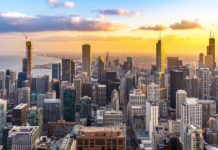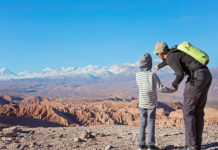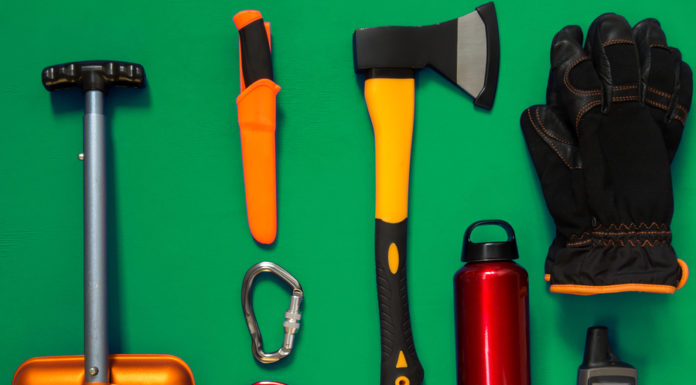So you’ve decided that you want to be 100% self-sufficient, and who can blame you? In today’s model of living, you become very dependent and it leads to a constant source of stress and distraction from the things that are important.
You work your whole life to build a life for you and your family, only to find that due to circumstances beyond your control that you could lose everything in the blink of an eye.
So now the question is, what is the next step to becoming self-sufficient? Well, they key is: Location! Location! Location! So how do you pick the perfect place to live in peace with your family? This process will likely occur in phases, which should occur in this order.
Phase 1: Land
As you can probably guess you’re going to want to choose a location where you can find land and lots of it. Surprisingly this might be the easiest step in the process. There exist ample amounts of land, and your options will be ripe for the picking. Obviously, you’re going to want to start by choosing a rural state with large amounts of land and a low population to occupy it. You’ll also want to compare land prices in different states and areas. It’s always best to distance yourself from highways but to still have access to roads so you can visit locals and go into town to deal with your basic needs, which brings us to the next step.
In addition to having a lot of land, you’ll also want an area where the climate is relatively mild and the winters are not too harsh. I would NOT suggest a state like Maine or Minnesota.
Phase 2: The Necessities
Chances are you’re not going to “need” very much at all at least in terms of the bare necessities for survival, however, there are a number of factors to consider to provide for those needs. So the basic needs for human survival are food, water, and shelter (some might argue clothing but you can bring that with you). Luckily, buying land is much cheaper than buying a house. Building a house is no easy ordeal but with the right skills, tools, and materials it can be done. It wouldn’t hurt to ask around to see if any friends and family might be able to help as well. It could be a fun community project.
You’re also going to need food. Since the idea is to be independent and off the grid you’re not going to obtain all your food from the local supermarket, obviously. So you want a piece of land where the soil is fertile and the climate is not too harsh for growing food. A land surrounded by trees is also ideal as it attracts birds and game, and in a heavily wooded area, it might fun to see if you forage for wild vegetation. Who doesn’t picking fresh raspberries, for example? You also will want a fresh source of water. Moving water from rivers is usually ideal as it won’t be as stagnant, but you still may want to boil it for drinking just in case. In fact please do!
Phase 3: Luxuries
You will want to determine what you want. What is it that you want to take with you for your own enjoyment. Don’t go overboard as the point is to escape the materialism and flash of the modern world, but also don’t feel like you have to live like the Amish or a prehistoric family of cavemen. You want to be off the grid, but you can still enjoy some basic pleasures.
For power, you’ll want an area that glows with sunlight for natural solar energy, or somewhere you can feel the wind blowing hard all year round for wind power. Alternately you might be able to harvest a nearby moving water source for hydropower, though this option could be more complicated. Every homesteader is going to want to have some kind of generator. While you could go with gas, it’s better to harvest the elements for true self-sufficiency.
You also might want access to the internet. Yes, the idea is to be off the grid. That doesn’t necessarily mean you want to be disconnected from your loved ones. It also doesn’t mean you want to immediately cut off a source of potentially valuable information. In today’s digital world of WIFI and even satellite internet, you can enjoy this luxury from afar. The internet could also be a valuable business tool, but we’ll get to that. Plus, if you have the internet you won’t need a phone. You can video chat via apps like Skype with loved ones and even use the same app to place outgoing phone calls on a pay as you go basis, or set up a computer-based home phone number for a relatively low monthly rate.
Phase 4: Community
Finally, you might want to look into some research as it relates to the community. Just because you’re independent and off the grid doesn’t mean you have to cut yourself off completely from humanity. There are many small, friendly communities forming where homesteaders and survivalists can get together for social contact and to help each other as they live their lives in peace.
You might not have next door neighbors, but it doesn’t hurt to have people nearby to visit. It also helps to be near a national park or other tourist attractions that attract visitors. This is good because it creates business opportunities for those homesteaders who want to go into business for themselves to pay for bare basic necessities (gas for your car, internet bill, and other amenities).
For the business aspect, you can also start a business online and completely internet based. If you have a computer and some kind of marketable digital skill (art, web design, even writing) you can make money without even leaving your property.
Phase 5: Settling In
Once you’ve determined your needs, wants, and have pinpointed a strong community if it’s on your list, all that remains is to obtain your land, start building, and get ready to settle in.







